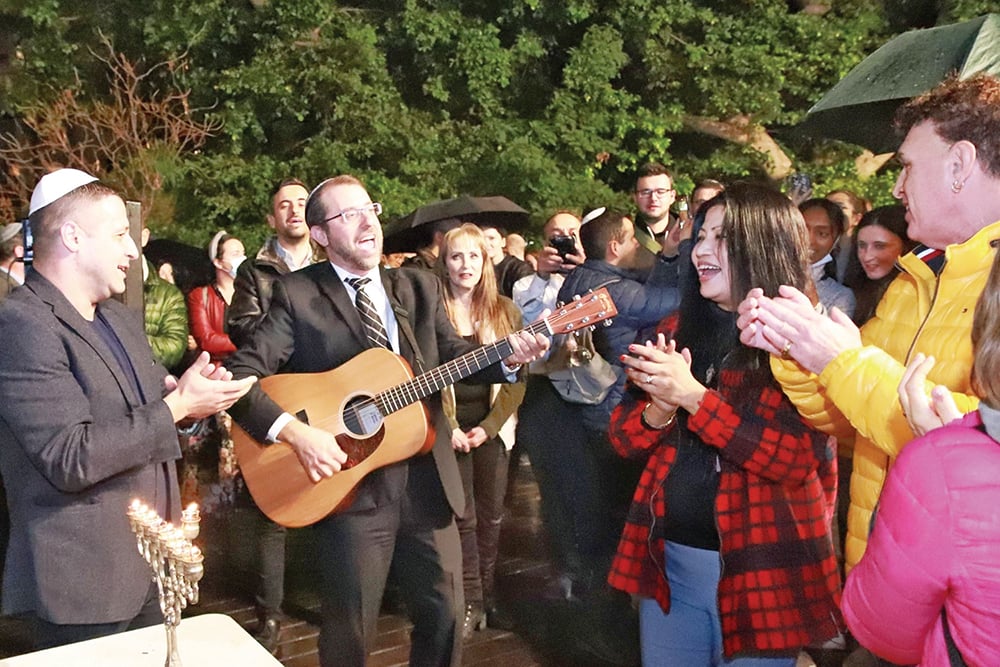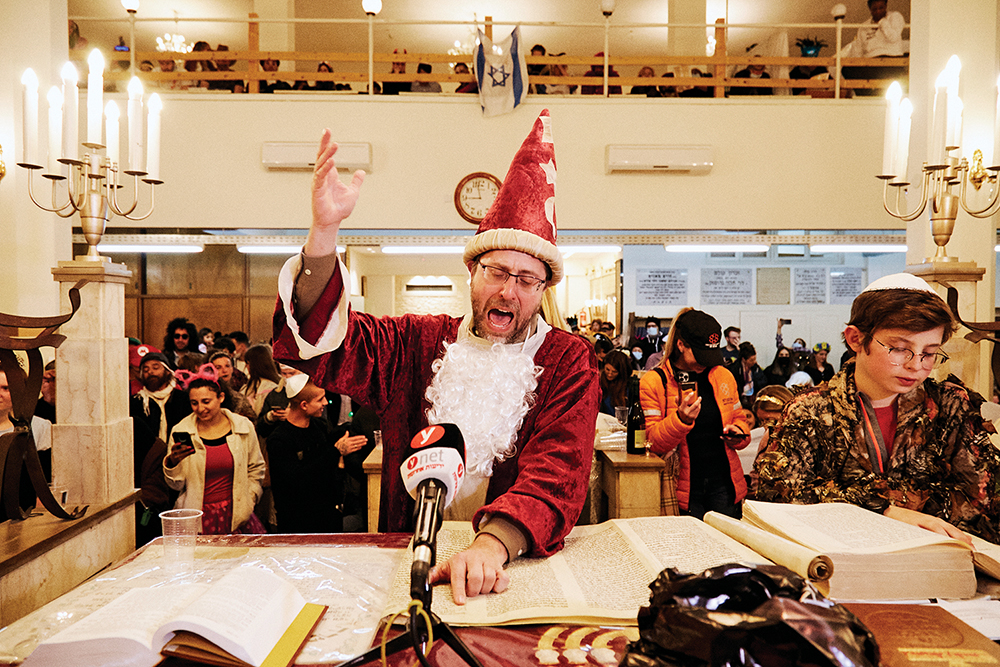
Tel Aviv is known for its vibrant nightlife and cultural scene, but the most popular place to be on Friday night might be a historic synagogue on 23 Frishman Street. A typical Kabbalat Shabbat service at The Tel Aviv International Synagogue could see upwards of 600 people gathered together in song and dance. Since its founding in 2009 in the historic Beit El synagogue, The Tel Aviv International Synagogue has served as a center for Jewish life in the city that never sleeps, thanks to the vision of Rabbi Ariel Konstantyn who infused life into the ancient house of worship, and also introduced an American-style synagogue where olim could feel at home.
Before making aliyah, Rabbi Konstantyn served as the rabbi at the Hampton Synagogue in Long Island and prior to that, he had a pulpit at Congregation Mount Sinai in Jersey City. In 2005, following his aliyah dreams, he left what he calls “the paradise” of The Hamptons for the paradise of Israel. Though he experimented with different career paths, he always felt a pull back to the rabbinate where he felt he could live his ideals and gain fulfillment by helping people enhance their lives through spiritual connection.
Rabbi Konstantyn, who at the time was living with his wife and children in Karnei Shomron, was in touch with a rabbi named Ronen Neuwirth who was very active with the Tzohar Movement and was known for building American-style synagogues in Israel. Rabbi Neuwirth encouraged Rabbi Konstantyn to move to Tel Aviv to establish a synagogue in this city with such a large immigrant population from North America. Though initially he was not excited to move to what he called “the New York of Israel,” Rabbi Konstantyn decided to take on the challenge. He set his eyes on the Beit El Synagogue that was established in the 1930s and was situated on a busy street just blocks from the coast. On Shabbat mornings, the synagogue would just barely get a minyan of mostly elderly men, alongside a handful of women across the mechitza. The group of synagogue elders reluctantly hired Rabbi Konstantyn, but on the condition that he would receive no salary.

Rabbi Konstantyn immediately felt a connection with the city. “It’s a vibrant, living city, you know, with a tremendous thirst, and a tremendous fear of Judaism,” he explained. He would walk the streets with young Israelis who just returned from trips to Thailand and India to seek a spiritual connection, but were so afraid to enter a synagogue. His goal was to turn a 1930’s synagogue into a welcoming, warm and nonjudgmental space where olim could feel a sense of community, and Israelis of all backgrounds could feel a connection.
His first project was to upgrade the synagogue’s outdated electrical system and install air conditioning. He hired a chazzan and choir to infuse energy into Shabbat services. He was careful to balance the traditions that were important to the synagogue veterans, while introducing modernizations such as vibrant tunes and communal lunches. He began a tradition of Friday night dinners to introduce people to Shabbat who ordinarily would not walk into a synagogue.
This initiative did not take off without its challenges. When neighbors started noticing this revival in Tel Aviv, there was some pushback from secular Israelis, and they did not hide their sentiments. But Rabbi Konstantyn was very careful not to force his beliefs on others and to maintain a welcoming environment for anybody interested in exploring religious life. At the same time, he was also receiving pushback from observant Israelis who frowned upon the diversity of the synagogue. Rabbi Konstantyn gave an example of congregants from neighboring synagogues who complained about rumors that cell phones could be heard ringing during Shabbat services. But even if this were true, he explained, he would be thrilled. “What can be better? What a blessing that this person has chosen to come to synagogue.”
Today, the once near-empty synagogue is teeming with religious life. Weekly Shabbat services overflow into the street. Some 1,500 people attend the synagogue’s annual Purim celebration. On Shavuot, classes are offered in multiple languages at various locations, which converge into one large sunrise service on the Tel Aviv sands. Since October 7, the synagogue has arranged weekly volunteer outings to support evacuees, soldiers and farmers.
Approximately seventy percent of synagogue attendees are immigrants, and about thirty percent are native Israelis. “Everybody connects to the community in different ways,” Rabbi Konstantyn said. It’s about giving people an “impactful Jewish experience in a loving and caring way.” Rabbi Konstantyn added that many rabbis in Israel focus on checking boxes and on the technicalities of the halacha, but they ignore the emotional and personal connection. His goal is to meet people where they are and show them that there is a place for them in Jewish communal spaces, so that they can feel a sense of belonging and live a more fulfilled life, without judgement.
Looking back at the growth of the synagogue and the subsequent revival of Jewish life in Tel Aviv, Rabbi Konstantyn acknowledges that, “There’s been a lot of Godly help there.” He added, “I came to Tel Aviv to break down those barriers and to develop a sense of togetherness, community, love, mutual respect.” He fully believes that Tel Aviv is his calling. “Somehow, in hindsight, it was just what I was meant to do.”
For more information visit https://www.tais-frishman23.com/









